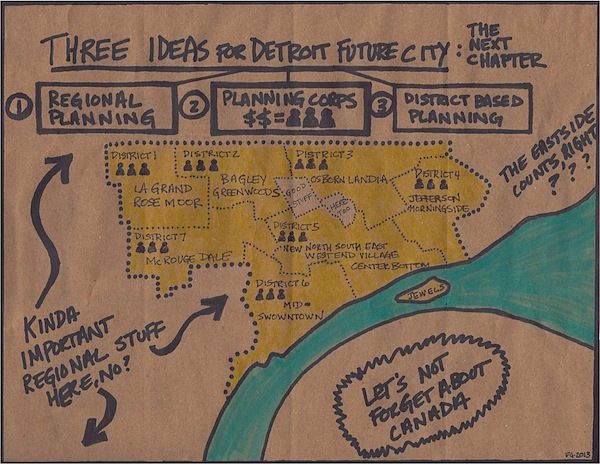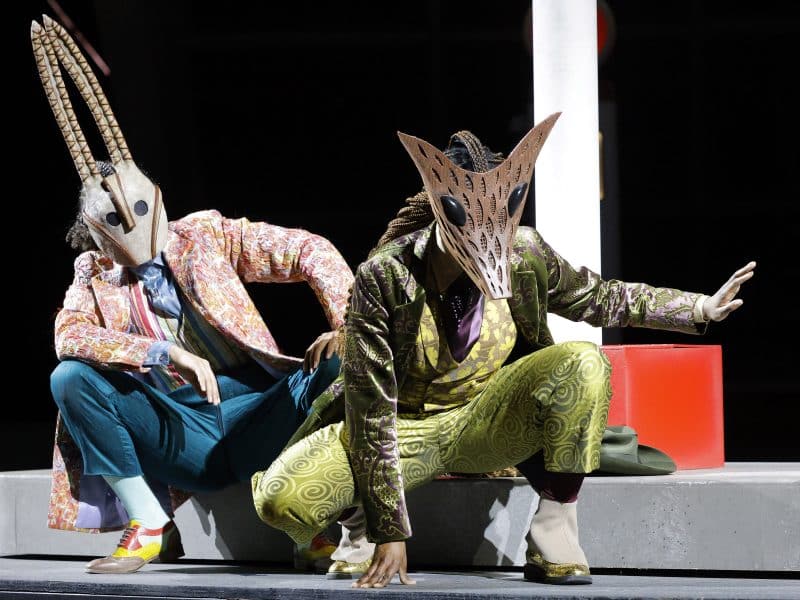Urban trailblazing: New series looks for trends before they happen
We begin with a forward-thinking critique of Detroit Future City by urbanist-preservationist-Detroit advocate Francis Grunow, who, by day, is a public policy consultant for New Solutions Group. By night, yes, he'll be burning the critical midnight oil for Model D.

Much has been written so far about the sprawling Detroit Future City report, released last month by the Detroit Works Project. On the whole, I agree with the growing sentiment that it is a solid document, providing deep data, thoughtful analysis and great insight into the many challenges and opportunities of Detroit at the dawn of the city’s 4th century.
Now the big question is, “What next?” Here are three ideas that merit greater attention, and could help make planning and implementation in the actual Detroit future city much more effective:
Think regionally
The most glaring shortcoming of Detroit Future City is that it’s not a regional framework. How about Hamtramck, Highland Park, north of 8 Mile, west of Telegraph, the other side of the Detroit River? Who lives in these places and what is their relationship to Detroit?
It’s true, regional planning was not necessarily the charge of the authors — but it should have been. Someday it will happen. Until then, we should move beyond mere coordination and formalize paths to decision-making between municipal planners on either side of the border.
Planning by district
This November, Detroiters will vote for a new City Council. This council will be special. It will be the first in a century to be elected by district — seven council districts, each encompassing about 100,000 people. In many cases, the neighborhoods that make up these districts are already organized and working on community-based planning initiatives.
Community-based organizations that have a track record of leading progressive redevelopment activity (e.g., housing, commercial stabilization, and beautification programs) have a leg up in leading planning in their district. The new council should work with these groups in an official capacity to help ensure city service delivery, using the findings of Detroit Future City as a guide.
Enlist a planning corps
Kresge Foundation’s $150 million commitment to support Detroit Future City’s implementation is a major investment, but the $3 million to oversee early stages is not nearly enough. We need a citywide “planning corps” — a cadre of informed, data driven denizens to integrate city function with the efforts of existing community-based organizations that have worked on these issues for years.
An investment of $1 million per district per year — or $21 million over three years — could hire and embed 100 of these planners throughout the city to help shepherd the small, human-scaled projects that smartly focus activity and investment in the best possible way, for the greatest possible impact, neighborhood by neighborhood. Over time, this planning corps could begin to reverse the hubris of their predecessors, give planning a good name, and lay the foundation for a real Detroit, future city.
And the rest of us can get back to saving the world in our own way. Or at least get back to our Facebook feed.
Francis Grunow is a public policy consultant with New Solutions Group, located in the Green Garage in Midtown. Look out for his new series in future issues of Model D.
Illustration above created by Francis Grunow.




